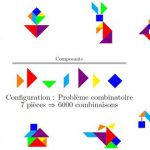Video, the chameleon-like medium of scientific culture
In recent years, a real passion for science videos has emerged, especially with the rise of YouTube. Video is a comprehensive and complex tool that adapts to different audiences. This explains why video holds such a prominent place as a vehicle of scientific culture at CCSTI La Rotonde (Mines Saint-Étienne). It also explains why I’MTech now shares audiovisual content.
Whether it’s a light, funny commercial or a serious and thoughtful documentary, video is an effective and appealing tool for popularizing science. It can bring the viewer something real, and is accessible for all ages. This chameleon-like medium can stand alone, or complement other forms of media. Video is central to the technical and industrial scientific culture at La Rotonde, Mines Saint-Étienne, and has been a tool of choice for the 18 years of the organization’s existence. Its director, Guillaume Desbrosse, talks to us about this medium’s presence in the scientific culture.
How important is video at La Rotonde?
Guillaume Desbrosse: Since our organization was established, we have been developing video as a tool. It is part of our DNA. This is fairly unusual, since video skills are not easily developed. The structure quickly began partnering with professional and amateur videographers to produce scientific culture resources on video. We use it fairly regularly. We also use video in the exhibitions we organize. It is an extremely interesting medium for reaching an audience that is very accustomed to screens and animated images.
In recent years, we have seen a rise in amateur videographers, how are they contributing to scientific culture today?
GD: This love of videos has exploded over the past years thanks to YouTube. Amateur videographers are now beginning to produce content they intend to broadcast on a wide range of subjects, and scientific culture has not been left behind, although there are varying levels of quality. At La Rotonde, we have followed this closely; we considered it significant since other players outside the institutional realm were beginning to disseminate the sciences. Their success, as seen in the number of subscribers, comments, and number of views, made us think. How can we encourage these projects – which play an important role in today’s scientific culture – and support them?
This is why, along with Mines Saint-Étienne, we decided to renovate a building that became studio Papaï (Plug And Play Audio and Image) based on a project by engineering students. Beyond the in-house use of this studio (engineering students, teachers, researchers…), it is also open to amateur videographers. We offer to host them for a residency so that they can produce resources on scientific culture. Currently, we are supporting the YouTube channel “Balade Mentale”, which addresses a wide variety of themes, ranging, for example, from the sense of smell to the study of motion. This channel is run by dynamic group of young people, and is gaining popularity, with a little over 30,000 subscribers. We have decided to support this channel for one year. We also support their joint projects with Florence Porcel, who popularizes the science of the universe. Following the success of this joint effort, we decided to organize calls for projects to make this opportunity available to other videographers.
Does this enthusiasm for online science videos reinforce the idea that we do not need a lot of resources to do something that is successful?
GD: The ideas are what drive the projects. One issue is scientific credibility. When an audience comes to view an exhibition at La Rotonde, they know that it is an official structure, and that the content has been approved by a scientific committee. It’s important to have this rigorous aspect. Of course, the more we see scientific culture online, the happier we are, but it must also be done in accordance with professional standards, and with good quality content. This is the case for many CSTI channels. Then, there is the question of the legal status of these creators, which is a key issue. What is the appropriate economic model for these creators? What is the most suitable positioning in the professional audiovisual landscape? I am against using their creations and skills without fair compensation. We are working on a model that would provide them with quality assistance and support them decently!
In general, does video allow you to expand your target audience?
GD: What is interesting is that there is not one medium that is better than all the others, since they each target a specific audience. We must be active on all fronts, and the video tool offers many advantages in this area. However, there are also constraints involved, this medium is very time-consuming in terms of the editing, filming, lighting… If you want to give your audience something to look at, you need a lot of images when you produce a report. However, in general, video has the advantage of not being exclusive; it is often fun and can offer a variety of formats.
Is the ability to offer several video formats an advantage?
GD: We have produced long videos, with 30-minute reports, and short video clips that only last one minute. We like to play around with the different types of media and, for me, video is an exciting and very interesting medium for this reason. It works a little like a test laboratory. When they were starting out, Balade Mentale used a format that took a long time to produce, and required a lot of work. They then moved onto the “facing the camera” format, which enabled them to become faster and more efficient. They improved by using more humor and giving their videos more “punch”.
So, it really depends on who we are targeting. I know the current trend is to use short formats. People like watching something fast. It has to catch their interest, and if it’s not funny 4 seconds in, they turn it off. But we need to give people the possibility of using longer formats, in which we take the time we need, and provide a different relationship between the videographer and audience. We should not avoid these formats by giving into the trend towards quick consumption. Humankind is rich and diverse, and we also need to respect that fact.





Leave a Reply
Want to join the discussion?Feel free to contribute!